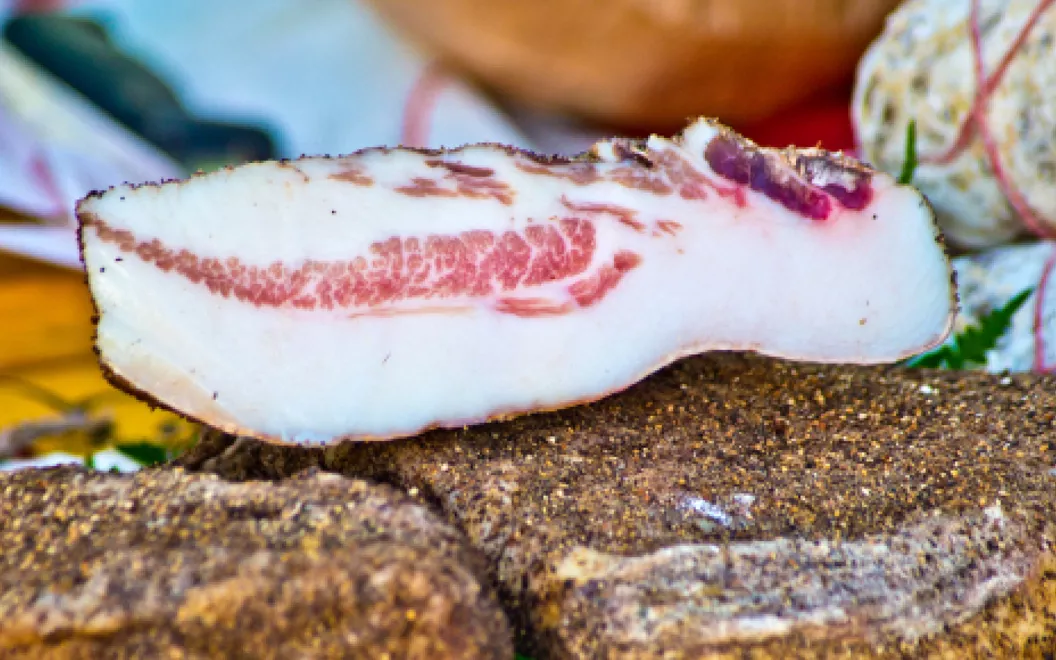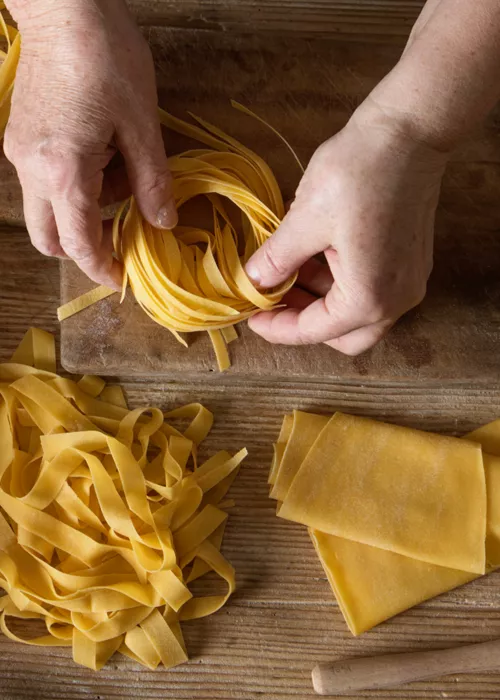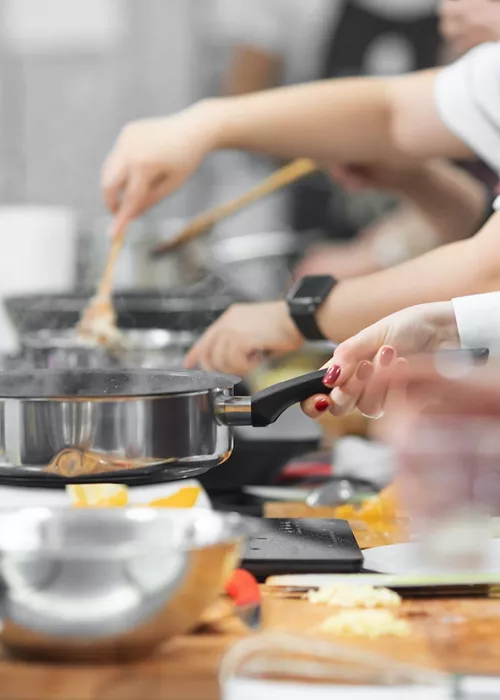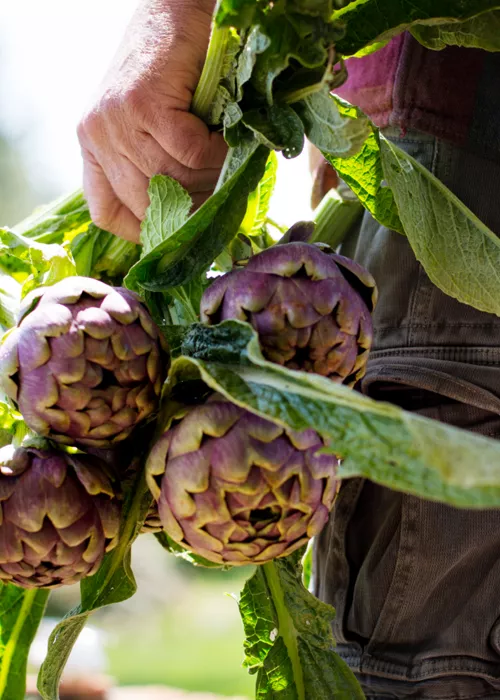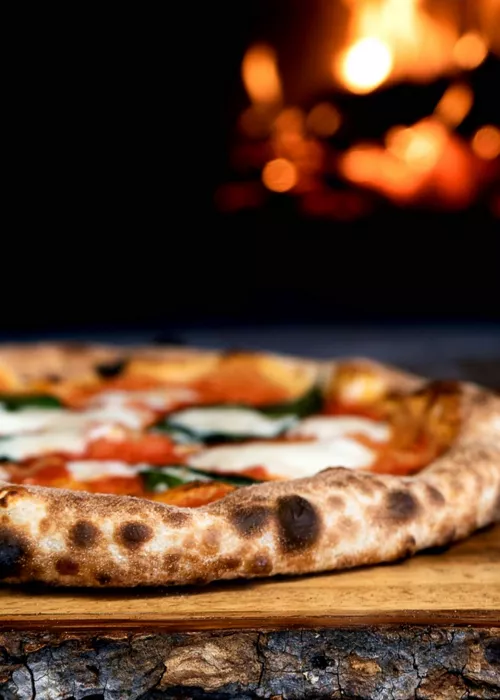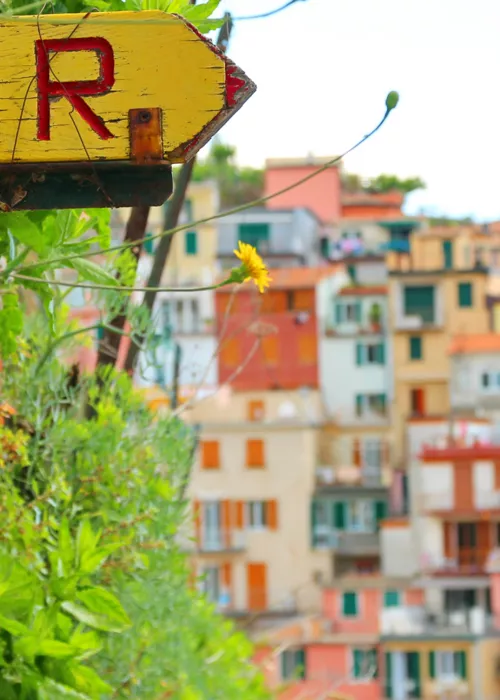The Lazio region by way of Gabriele Bonci’s pizza
3 minutes
The history of guanciale and other gastronomic wonders of Lazio
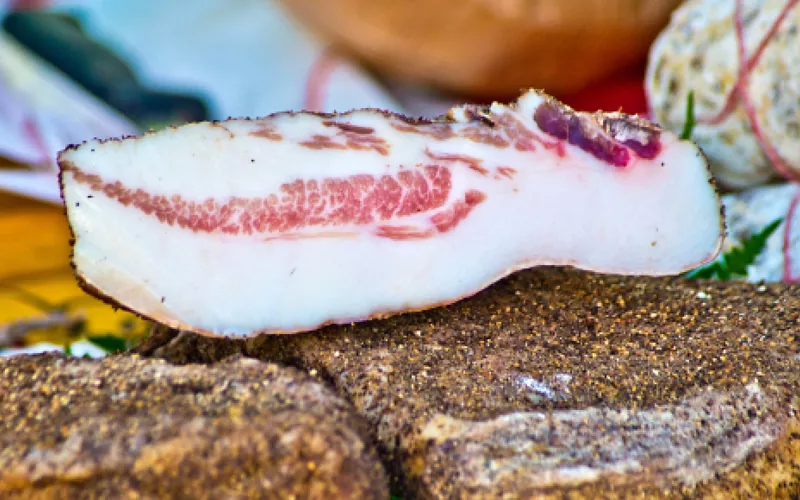
Guanciale is the star ingredient in Lazio cuisine, born in the Sabina area as a valuable, energy-boosting food to sustain shepherds during the months of transhumance. It is a cured meat made from the cheek, neck and throat of the pig, a refined cut. When cut, it takes on a unique triangular shape; it is then seasoned with salt, pepper, chilli pepper, other herbs and garlic, and cured. According to the traditional recipe from Amatrice, it is lightly smoked over an oak-wood fire.
Guanciale originated in the area of Amatrice and Accumuli, in the province of Rieti, and Campotosto, in Umbria, where Guanciale Amatriciano is produced today. Shepherds used to carry water and flour in their saddlebags when they left for the mountains so they could make pasta, and they took guanciale and pecorino cheese to season it. And so, “gricia” was created – a version of the more famous “amatriciana” but without tomatoes.
Beyond guanciale
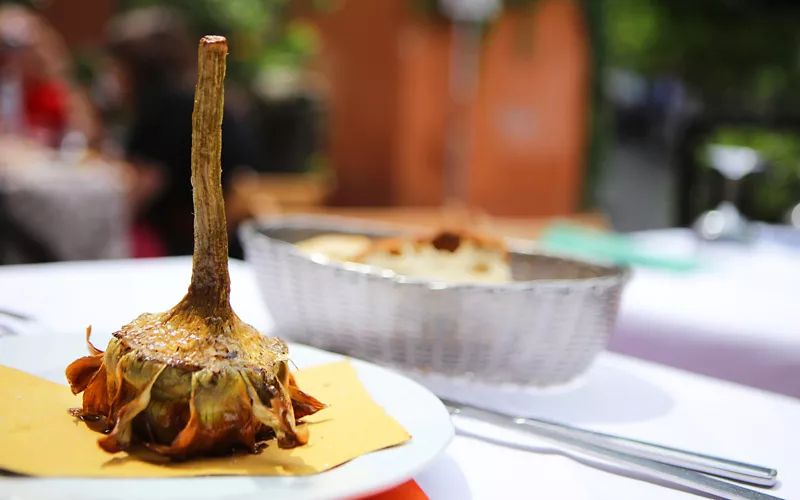
Guanciale is the star of the two most classic pasta dishes in Lazio: bucatini all'amatriciana with fresh tomatoes and onion, and spaghetti or rigatoni alla carbonara with fresh eggs and Pecorino Romano. This cheese is another delicacy throughout Lazio, with an aromatic and slightly spicy flavour, the main ingredient in pasta cacio e pepe, a Roman classic that traditionally uses tonnarelli pasta.
The most famous street food in Lazio is porchetta di Ariccia, a pork dish made in the outskirts of Rome since ancient times. In Roman times, priests would come from this area to prepare pork for sacrifice in the temple of Jupiter on nearby Monte Cavo. Porchetta is a taste sensation, seasoned with garlic, black pepper and rosemary, with a crispy rind that melts in the mouth.
The Lazio countryside also provides two popular ingredients on Roman tables: puntarelle and artichokes. The former are the sprouts of a particular type of chicory (chicory catalogna, or cicoria asparago), best eaten “alla romana” – raw, seasoned only with oil, garlic and anchovies; artichokes refer to Roman artichokes, or mammole artichokes, with their classic round shape and very sweet flavour. They are perfect for preparing two traditional dishes: artichokes “alla romana”, stuffed with mint, garlic, parsley, salt and pepper and cooked slowly, upside down in a pan; and artichokes “alla giudia”, the mainstay of Roman-Judean cuisine. In the Ghetto, this recipe was prepared to break the fast after the feast of Yom Kippur. The artichokes are fried in plenty of olive oil, which used to be a great luxury, twice, which makes them bloom like roses, until they are golden and crispy.
Among the cornerstones of cuisine in Lazio, we cannot forget the “quinto quarto” (“fifth quarter”, or offal), the poorest part of the animal at the heart of many typical dishes. For example, we have rigatoni con la pajata or pasta with calf's intestine; or coda alla vaccinara, an oxtail recipe that originated in the Regola district of Rome, which has the tail stewed for many hours with celery, pine nuts and sultanas.
Last but not least, we have to mention maritozzo, a delicious Roman dessert: a small loaf of flour, eggs, honey, butter and salt. In the "Pentecostal" version, pine nuts and sultanas are also added, and it is cut in two and filled with plenty of whipped cream. The recipe dates all the way back to ancient Rome. Its name comes from the fact it was given as a gift to engaged girls by their “maritozzo”, their betrothed, and it could also contain a jewel to affirm their bond.

